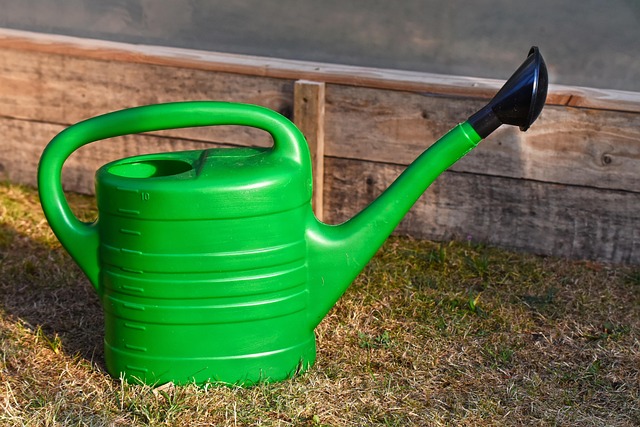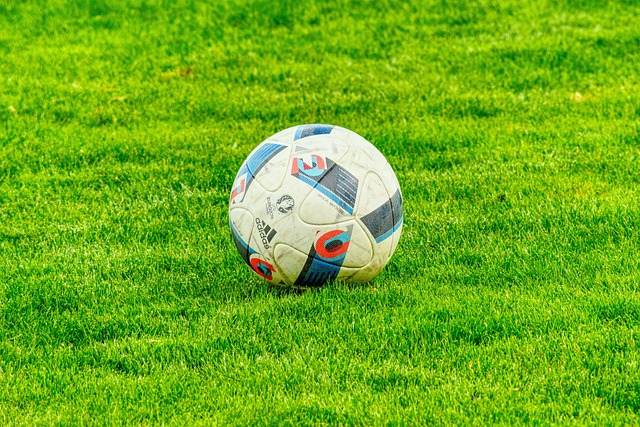To install an efficient irrigation system, understand your lawn's water needs based on grass type, soil composition, density, and local weather. Choose from options like spray systems, drip irrigation, micro-sprinklers, or rotator sprinklers, each offering unique benefits for water distribution, energy efficiency, and cost. Properly place and set up sprinklers strategically, aiming for uniform distribution, and use the right sprinkler type for different vegetation. Regular maintenance ensures optimal system performance, minimizes waste, and keeps your lawn and landscaping healthy.
Looking to transform your lawn from parched to pristine? Efficient irrigation is key. This comprehensive guide dives into the essentials of lawn care and landscaping, helping you understand your grass’s unique water needs. We’ll explore various types of irrigation systems, catering to every landscape and budget, and equip you with expert installation tips for long-lasting, water-efficient results. Get ready to cultivate a lush, vibrant yard that thrives, all while conserving precious resources.
- Understanding Your Lawn's Water Needs: A Foundation for Effective Irrigation
- Types of Irrigation Systems: Options for Every Landscape and Budget
- Installation Tips and Best Practices for Long-Lasting Efficient Irrigation
Understanding Your Lawn's Water Needs: A Foundation for Effective Irrigation

Understanding your lawn’s water needs is a crucial foundation for effective irrigation system installation. Every lawn is unique, with varying requirements based on factors like grass type, soil composition, and exposure to sunlight. Proper Lawn Care and Landscaping professionals recognize that over- or under-watering can lead to poor grass health and inefficient water use. By assessing your lawn’s specific needs, you can ensure the installed irrigation system delivers the right amount of water at the optimal times, fostering a lush and vibrant green space.
This involves considering factors such as the depth and permeability of your soil, the density of your lawn, and local weather patterns. For instance, denser grass types may require more frequent but shorter watering sessions, while sandy soils drain quickly, necessitating more extensive but less frequent irrigation. Incorporating these insights into your irrigation design allows for tailored water distribution, enhancing efficiency and promoting robust Lawn Care and Landscaping practices.
Types of Irrigation Systems: Options for Every Landscape and Budget

When considering irrigation system installation, one of the first decisions to make is choosing the right type for your lawn care and landscaping needs. There are several options available, each designed to cater to different landscapes and budgets. Spray irrigation systems, for instance, offer efficient coverage for large areas, making them ideal for vast yards or fields. These systems use sprinklers that spray water in a fine mist, ensuring deep penetration into the soil while conserving water. On the other hand, drip irrigation is a more subtle approach, delivering water directly to plant roots through a network of pipes buried beneath the surface. Perfect for flower beds and vegetable gardens, drip systems are highly effective and less wasteful as they minimize evaporation.
For smaller spaces or areas with specific requirements, micro-sprinkler or rotator sprinkler systems excel. Micro-sprinklers provide focused coverage, making them excellent for protecting individual plants or small groups from drought conditions. Rotator sprinklers, on the other hand, cover a broader area and are great for maintaining lawn health during warmer months. Each system has its advantages in terms of water distribution, energy efficiency, and cost, allowing homeowners to select the best fit for their landscapes while promoting sustainable lawn care practices.
Installation Tips and Best Practices for Long-Lasting Efficient Irrigation

When installing an irrigation system, proper placement and setup are key for long-lasting efficiency in lawn care and landscaping. Begin by assessing your property’s unique topography and plant life to determine the most strategic sprinkler placement. Aim for a balanced distribution of water throughout your yard, avoiding over-saturating specific areas that could lead to weed growth or soil erosion. Consider the type of sprinklers best suited for different vegetation; for example, drip irrigation is ideal for flowerbeds and vegetable gardens, while pop-up sprinklers are more effective for open grass areas.
Regular maintenance is another crucial aspect of irrigation system installation. Ensure all connections are secure and well-sealed to prevent leaks. Schedule routine inspections to check for any damage or misalignment. Adjusting sprinkler heads based on seasonal changes in vegetation density will optimize water distribution. Additionally, setting a timer to activate the system during cooler parts of the day can enhance efficiency by minimizing evaporation. Following these best practices will ensure your irrigation system provides consistent and healthy hydration for your lawn and landscaping.
Irrigation system installation is a strategic investment in your lawn care and landscaping. By understanding your lawn’s water needs, exploring diverse irrigation system types, and adhering to expert installation tips, you can achieve efficient watering that promotes lush, vibrant landscapes. Incorporate these practices into your lawn care routine for long-lasting, sustainable results.






